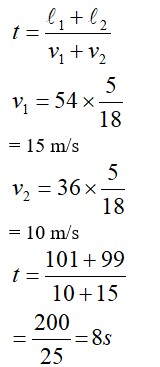A particle executes the motion described by x(t)=x0(1-
);t>0,xo>0.
(a) Where does the particle start and with what velocity?
(b) Find maximum and minimum values of x (t), v(t),a(t). Show that x (t) and a (t) increase with time and v (t) decreases with time.
A particle executes the motion described by x(t)=x0(1- );t>0,xo>0.
(a) Where does the particle start and with what velocity?
(b) Find maximum and minimum values of x (t), v(t),a(t). Show that x (t) and a (t) increase with time and v (t) decreases with time.
-
1 Answer
-
This is a short answer type question as classified in NCERT Exemplar
(a) x (t)=x0 (1- )
V (t)=dx/dt= x (t)=x0 ( )
A (t)= x ( t)=x0 ( )
(b) when t=o x (t)= x (t)=x0 (1- )= x (t)=x0 (1-1)=0
x (t) is maximum when t=
x (t) is maximum when t=
v (t) is maximum when t= , v (0)=x0
v (t) is maximum when t= v ( )=0
a (t) is maximum when t= , a ( )=0
a (t) is maximum when t= , a ( )=-x0 2
Similar Questions for you
Please find the solution below:
[h] = ML2T-1
[E] = ML2T-2
[V] = ML2T-2C-1
[P] = MLT-1
According to question, we can write
10 =
Average speed
(d) Initial velocity
Final velocity
Change in velocity
Momentum gain is along
Force experienced is along
Force experienced is in North-East direction.
Taking an Exam? Selecting a College?
Get authentic answers from experts, students and alumni that you won't find anywhere else
Sign Up on ShikshaOn Shiksha, get access to
- 66k Colleges
- 1.2k Exams
- 680k Reviews
- 1800k Answers



